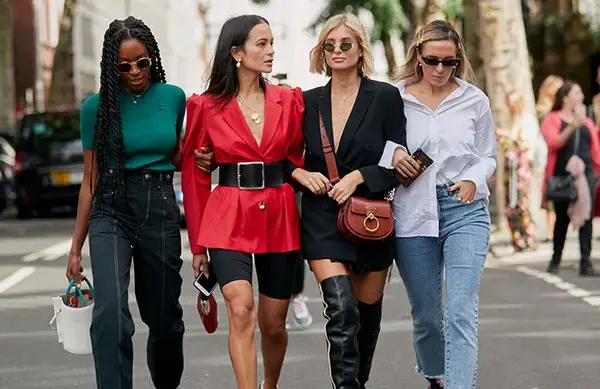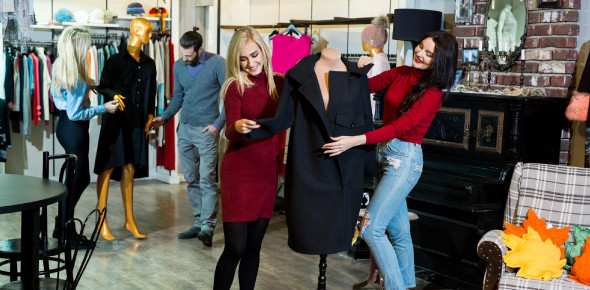Fashion has been an integral part of human culture for centuries. It goes beyond mere clothing choices; it’s an art form that allows individuals to express their unique personalities and creativity. Fashion has a remarkable influence on societal trends, shaping the way people perceive themselves and others. In this article, we delve into the captivating world of fashion, exploring its history, its impact on individual expression, and its role in shaping cultural diversity and inclusivity.
History of Fashion
Fashion has a rich and diverse history that dates back to ancient civilizations. From ancient Egyptian garments to elaborate Renaissance attire, clothing has always been used to communicate social status, identity, and cultural affiliations. Over time, fashion evolved, influenced by various movements like Romanticism, Art Deco, and the Roaring Twenties. The 20th century saw dramatic shifts in fashion, with iconic figures like Coco Chanel and Audrey Hepburn leaving an indelible mark on the industry.
Fashion and Individual Expression
Fashion serves as a powerful tool for individuals to express themselves. Clothing choices, accessories, and personal style can convey emotions, beliefs, and values without uttering a word. Whether it’s a daring outfit that exudes confidence or a bohemian ensemble that reflects a free spirit, fashion empowers people to showcase their inner selves to the world.
The Influence of Fashion Icons
Throughout history, fashion icons have inspired trends and styles. From the glamorous influence of Hollywood stars to the avant-garde vision of designers like Alexander McQueen, these trailblazers shape the way we perceive fashion. In today’s digital age, social media influencers wield significant power in promoting certain looks, making trends more accessible and pervasive than ever before.
Fashion and Cultural Diversity
Fashion is a global phenomenon, and cultural diversity plays a vital role in its evolution. Different cultures contribute unique elements to the industry, enriching it with a myriad of colors, fabrics, and design inspirations. However, it’s crucial to approach cultural representation in fashion with sensitivity and respect to avoid appropriation.
Sustainable Fashion
As awareness of environmental issues grows, so does the demand for sustainable and ethical fashion. Fast fashion’s impact on the planet and exploitative labor practices have come under scrutiny. The rise of eco-friendly materials, fair-trade practices, and conscious consumerism is changing the landscape of fashion, promoting a more responsible and compassionate industry.
Fashion and Technology
Technology has revolutionized the way we interact with fashion. Social media platforms have become virtual runways, democratizing trends and fostering online communities of fashion enthusiasts. E-commerce has made shopping more convenient, enabling consumers to access the latest styles from anywhere in the world.
Fashion and Gender
The traditional binary concepts of gender in fashion are gradually giving way to more inclusive and fluid expressions of identity. Fashion plays a significant role in challenging societal norms and embracing gender diversity. Designers and brands are increasingly creating collections that cater to people of all gender identities.
Fashion and Body Positivity
The fashion industry has been notorious for promoting unrealistic beauty standards, but the tide is turning. Body positivity is gaining momentum, with diverse body types being celebrated on the runways and in advertisements. The shift towards inclusivity is empowering individuals to embrace their bodies and feel confident in their fashion choices.
The Psychology of Fashion
Fashion and psychology are closely intertwined. What we wear can profoundly impact our mood, self-esteem, and behavior. Colors, textures, and styles can evoke different emotions and perceptions, allowing fashion to play a role in self-care and mental well-being.
Fashion Trends vs. Personal Style
While fashion trends come and go, personal style endures. Embracing one’s individuality and unique preferences is key to developing a timeless and authentic fashion sense. Trends can serve as inspiration, but true style emerges when individuals blend them with their personalities.
The Impact of Fast Fashion
The rise of fast fashion has transformed the fashion industry, making trends accessible and affordable to a wide audience. However, the rapid production and disposal of clothing have severe environmental consequences and exploit workers in the supply chain. Making informed and sustainable fashion choices can contribute to a more ethical and eco-conscious world.
Fashion and Self-Expression in the Workplace
The workplace dress code has evolved over time, becoming more flexible and embracing individual expression. While dressing appropriately is essential, employees can use fashion to convey professionalism while still showcasing their personal style.
Fashion and Mental Well-being
Clothing can play a surprising role in mental well-being. The phenomenon known as “enclothed cognition” suggests that what we wear can influence our cognitive processes and behavior. Dressing in a way that makes us feel good can boost confidence and enhance overall mood.
Conclusion
Fashion is a dynamic and ever-evolving art form that allows individuals to showcase their identity and creativity. It influences and is influenced by culture, technology, gender norms, and societal values. As the fashion industry continues to evolve, embracing sustainability, inclusivity, and individual expression will be crucial for creating a positive and impactful fashion future.


